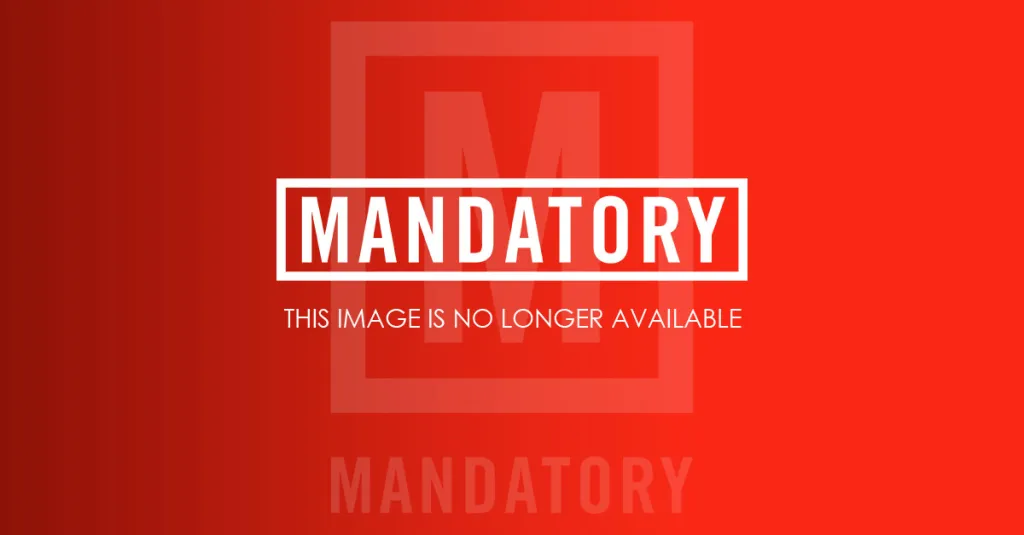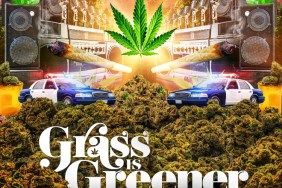There’s a great moment at the beginning of Detroit, Vogue in which one of the film’s subjects, explaining why being gay in Detroit is especially tough, says that before coming out he drew some measure of safety from the fact that, “I was never a flame. I was never the type that you would know I was gay.” The camera slowly pans across him to the woman sitting just behind him, and though she’s only in frame for a few seconds, the look on her face – eyes squinted in non-lethal side-eye; lips slightly parted in unasked question or unspoken biting comment – speaks volumes through its ambiguity. It’s a blink-and-you’ll-miss-it, chuckle-inducing moment that turns instantly somber as the speaker continues with, “I didn’t want to get picked on, beat on…”
Director Mollie Mills’ film conjoins two of pop culture’s hottest conversation pieces – Detroit post-decline, and ball culture. The language, attitude and physical expression (voguing) of the former are foundational planks of contemporary pop culture while the status of the latter has given rise to a vein of thriving and often grotesque ruin porn that often ignores the (mainly black) longtime residents to create titillating tales of decay and despair. In looking at the places and actual bodies where modern day Detroit and ball culture intersect, Mills is tapping into subject matter that is simultaneously much discussed but little really known. Only in flickers does the film deliver on its potential.

Vogue, Detroit is beautifully shot, at times seeming like a fashion spread layout in moving form. It’s full of close-ups on faces that are various shades of brown. Slow-motion effects are used throughout, and at times in a breathtaking manner: there’s a captivating moment when a short-haired diva dances in the doorway of a nightclub’s women’s restroom, with the pale wall tile behind her, the dark wood of the door frame framing her body, and the swirl of lights from the dance floor sweeping over her body. It’s magnificent. And when one young trans woman speaks of the elders who tutored her in how to be a woman, less concerned with how she looks than how she carried and treated herself, it’s a powerful testimonial. It’s made even more so as she applies makeup, does her hair, and gets dressed while distilling the philosophies that ground her.
But the film’s shortcomings outweigh the pros. Even a short, glossy film should meet certain basic requirements. None of the people in the film are ever named or identified. We never learn how they support themselves, if any are in school, or if any are in contact with their birth families or not. The film leans hard on familiar narratives of estrangement, on familial and cultural homophobia, but renders it all generic. And when a worker at the Ruth Ellis Center speaks about the services the center provides, the film never fills the viewer in on who Ms. Ellis was, or just how important and respected she was, and the center is across the landscape of black American LGBTQ culture. We’re told by one speaker that voguing has a long history in Detroit, but told little substantial about that history, or the ways Detroit’s ball culture has been influenced by – or even has influenced – other ball cultures across the country.

Visually the film is on point, and worth checking out for that alone. But it leans on tragic narratives we already know from countless other sources (including the seminal but flawed ball culture classic documentary Paris is Burning) without really individualizing the stories we hear in a way that captures the person speaking, that frames them beyond received notions of tragedy and empowerment. There’s an intellectual and journalistic laziness in play. Speakers in the film are largely interchangeable with one another and with figures from other documentaries and cultural exposés.
There’s one especially potent moment that begs to be teased out. As the camera circles the club that is the film’s primary setting, one young guy throws up a black power fist, and you can’t help but wish that Mills had stopped the camera on him and asked him to speak specifically about what the gesture means to him, a young, black queer kid living in a city whose blackness has been, and is being, used against it. His assertion of black pride, his emphasis on it in within the context of unapologetic faggotry, represents a layered revolution still in progress.
All images from Vogue, Detroit
Previously on Art Doc of the Week:
Art Doc of the Week
-
Art Doc of the Week | Los Punks: We Are All We Have

The award-winning doc looks at Los Angeles’ 40-year-old punk scene.
Photo: Angela Boatwright
-
Art Doc of the Week | McQueen and I

The late fashion designer Alexander McQueen’s life was as unconventional as his iconic shows.
Photo: Alexander McQueen: Savage Beauty
-
Art Doc of the Week | Who Is Poly Styrene?

The late British-Somali punk icon was vulnerable in her feminist art.
Image Courtesy the Artist Estate
-
Art Doc of the Week | Eva Hesse

The new documentary on the on the late visual artist is both informative and soulful.
Image Courtesy the Filmmaker
-
Art Doc of the Week | Packed in a Trunk

Edith Lake Wilkinson’s great niece investigates why the painter was institutionalized for seemingly no reason.
Photo: Wolfe Video
-
Art Doc of the Week | The Kate Bush Story

The 2014 BBC documentary on the reclusive pop star lets her high-profile fans swoon all over her.
Photo: Peter Mazel / Sunshine
-
Art Doc of the Week | Nikki Giovanni and Muhammad Ali in Conversation

The ionic poet interviews and is charmed by the sports legend for Soul talk show.
Photo: Getty Images
-
Art Doc of the Week | They Will Have to Kill Us First

Malian musicians use their music to stand up to Islamic fundamentalists.
Photo: BBC Worldwide
-
Art Doc of the Week | Step Up and Be Vocal

The 2001 film looks at the role punk played and plays in shaping some queer and feminist identities.
Photo: PansyDivision.com
-
Art Doc of the Week | Mapplethorpe: Look at the Pictures

The first ever documentary on Robert Mapplethorpe makes the case for his art and legacy while showing his warts and all.
Photo: J. Paul Getty Trust / LACMA / Robert Mapplethorpe Foundation
-
Art Doc of the Week | Parliament Funkadelic: One Nation Under A Groove

Director Yvonne Smith traces funk from its doo-wop origins to its role as a building-block of hip-hop.
Photo: GeorgeClinton.com
-
Art Doc of the Week | Pete Seeger: The Power of Song

An OG political protest singer has much to teach us today.
Photo: Reuters
-
Art Doc of the Week | The Post Impressionists: Munch

Edvard Munch was a poster boy for the idea of the artist as brilliant, immeasurably tortured soul.
-
Art Doc of the Week | Detroit, Vogue

Director Mollie Mills’s short doc on Detroit’s current ball culture is high on visual impact, skimpy on substance.
Photo: Vogue, Detroit
-
Art Doc of the Week | Colored Frames
 The paintings highlighted in Lerone D. Wilson’s film are pulled into deep conversation with the complex realities of black life.
The paintings highlighted in Lerone D. Wilson’s film are pulled into deep conversation with the complex realities of black life.Photo: Colored Frames
-
Art Doc of the Week | Spirits of Rebellion

Filmmaker Zeinabu Irene Davis’ documentary on filmmakers of the LA Rebellion is timely and illuminating.
Photo: Spirits of Rebellion / Julie Dash
-
Art Doc of the Week | Five

The 1971 documentary gives an overview of five African American visual artists as the bloody ‘60s turn into the hopeful ‘70s.
Photo: 110 St Harlem Blues, by Romare Bearden, courtesy DC Moore Gallery
-
Art Doc of the Week | Masters of Photography: Diane Arbus

This 1972 documentary filmed one year after the photographer’s suicide is intimate and revealing.
Top Photo: Roz Kelly / Getty Images
-
Art Doc of the Week | Dorothea Lange: An American Odyssey

The iconic photographer’s images of 20th century Depression-era America speak to current battles around class, race, immigration, and poverty.
Photo: Dorothea Lange
-
Art Doc of the Week | Out and Bad: London’s LGBT Dancehall Scene

The struggles and joys of forging queer identity within dancehall culture.
Photo: Dazed/Bernard Miller
-
Art Doc of the Week | And When I Die, I Won't Stay Dead

Director Billy Woodberry’s poetic take on the life and work of beat poet Bob Kaufman.
Photo: Billy Woodberry
-
Art Doc of the Week | The Sound of Redemption

Director N.C. Heikin turns saxophonist Frank Morgan’s life into one of 2015’s best documentaries.
-
Art Doc of the Week | It Came from Kuchar

The Bronx-raised Kuchar twins helped pioneer American underground film.
Photo: Indie Pix
-
Art Doc of the Week | Tamara de Lempicka

The visionary artist, an OG Material Girl, is still struggling to get art world respect.
Photo: http://www.delempicka.org/
-
Art Doc of the Week | Jaco

A documentary on the life and music of Jaco Pastorius also probes link between mental illness and creativity.
Photo: JacoPastorius.com
-
Art Doc of the Week | Janis Joplin: Little Girl Blue

A new documentary on the late rock icon digs beneath the lore to find a complex woman and artist.
Photo: Evening Standard/Getty Images
-
Art Doc of the Week | The Many Faces of Billie Holiday

Lady Day was much more than her blues, as this documentary makes clear.
Photo: The William P. Gottlieb Collection
-
Art Doc of the Week | Anita Sarko

The legendary DJ’s words on art, culture and creativity resonate powerfully in the wake of her recent death.
Photo: Svetlana Samoshina
-
Art Doc of the Week | Antonio Gaudi

Filmmaker Hiroshi Teshigahara lets out his inner fanboy as he pays tribute to his hero, iconic architect Antonio Gaudi.
Photo: The Criterion Collection
-
Art Doc of the Week | Poetry of Resilience

Katja Esson's documentary allows poets to reclaim the depth and possibilities of art.
Photo: Jeremy Sutton Hibbert








